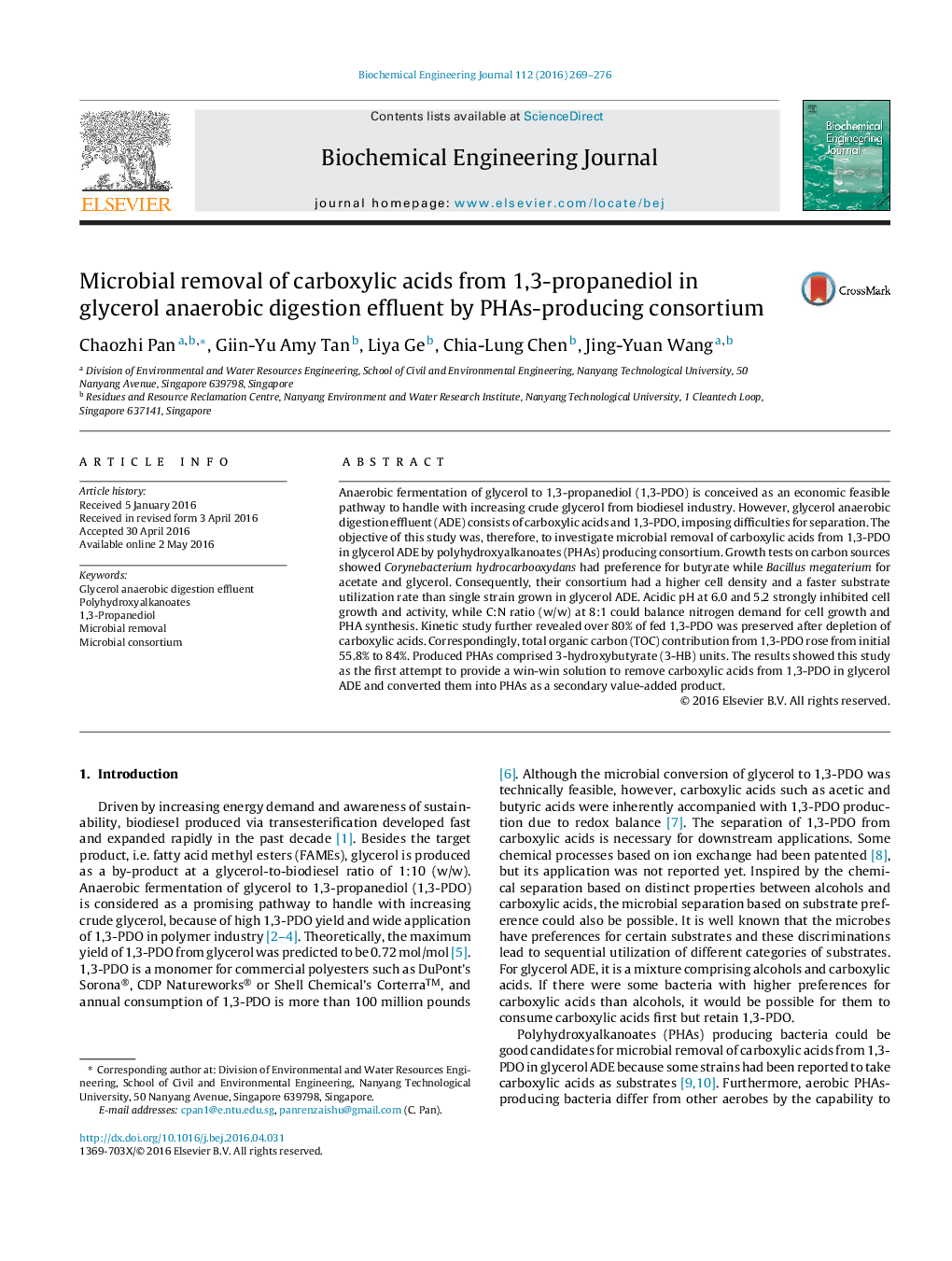| Article ID | Journal | Published Year | Pages | File Type |
|---|---|---|---|---|
| 2732 | Biochemical Engineering Journal | 2016 | 8 Pages |
•HAs-producing strains showed distinct substrate preferences.•Selected consortium had higher cell density and faster substrate utilization rate.•Microbial consortium scraped carboxylic acids but preserved 1,3-PDO in glycerol ADE.
Anaerobic fermentation of glycerol to 1,3-propanediol (1,3-PDO) is conceived as an economic feasible pathway to handle with increasing crude glycerol from biodiesel industry. However, glycerol anaerobic digestion effluent (ADE) consists of carboxylic acids and 1,3-PDO, imposing difficulties for separation. The objective of this study was, therefore, to investigate microbial removal of carboxylic acids from 1,3-PDO in glycerol ADE by polyhydroxyalkanoates (PHAs) producing consortium. Growth tests on carbon sources showed Corynebacterium hydrocarbooxydans had preference for butyrate while Bacillus megaterium for acetate and glycerol. Consequently, their consortium had a higher cell density and a faster substrate utilization rate than single strain grown in glycerol ADE. Acidic pH at 6.0 and 5.2 strongly inhibited cell growth and activity, while C:N ratio (w/w) at 8:1 could balance nitrogen demand for cell growth and PHA synthesis. Kinetic study further revealed over 80% of fed 1,3-PDO was preserved after depletion of carboxylic acids. Correspondingly, total organic carbon (TOC) contribution from 1,3-PDO rose from initial 55.8% to 84%. Produced PHAs comprised 3-hydroxybutyrate (3-HB) units. The results showed this study as the first attempt to provide a win-win solution to remove carboxylic acids from 1,3-PDO in glycerol ADE and converted them into PHAs as a secondary value-added product.
Graphical abstractFigure optionsDownload full-size imageDownload as PowerPoint slide
